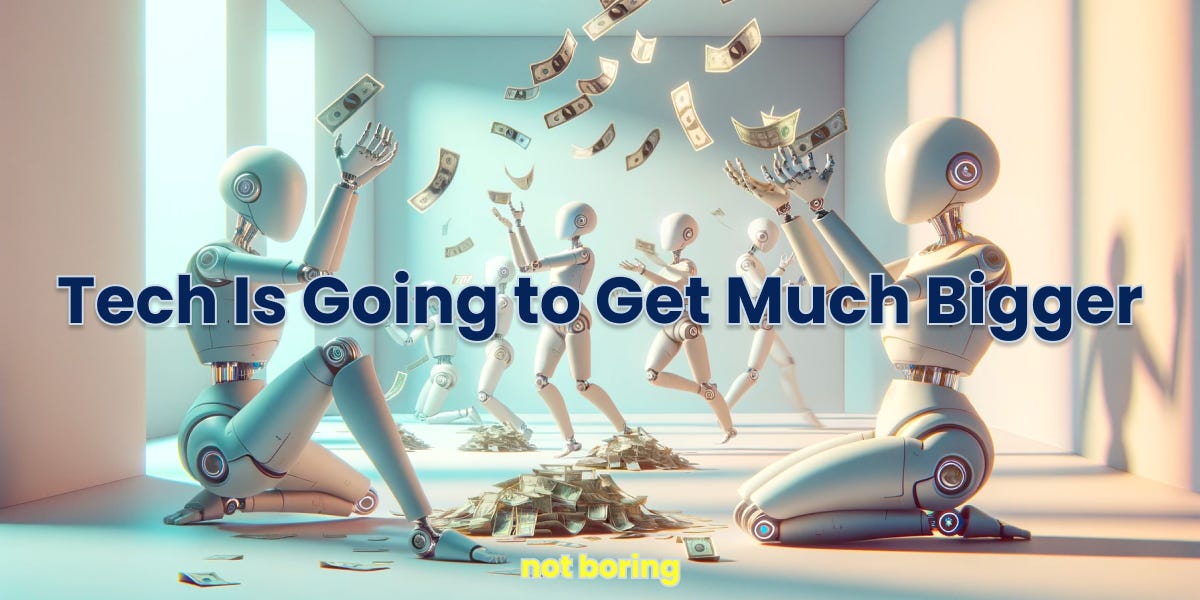Tech is Going to Get Much Bigger

🌈 Abstract
The article discusses how tech companies are poised to become much larger in the next decade or two, as they gain access to cheaper energy, intelligence, and dexterity (labor). This will allow tech companies to enter and disrupt larger industries, making them structurally more profitable. The article also suggests that every industry will start to resemble the software industry, with faster growth, higher margins, and more R&D spending.
🙋 Q&A
[01] Tech Companies Getting Bigger
1. What are the three pillars that go into any physical good or product? According to the article, the three pillars are:
- Energy
- Intelligence
- Dexterity (labor)
2. How will cheaper energy, intelligence, and dexterity benefit tech companies?
- Tech companies will be able to enter and disrupt larger industries, as they can offer better products at lower costs.
- This will make tech companies structurally more profitable, with higher margins and more money to invest in R&D.
- The biggest tech companies of the next decade will be much larger than today's tech giants.
3. What examples does the article provide of tech startups entering and disrupting established industries?
- SpaceX disrupting the government-dominated launch industry
- Anduril disrupting the defense industry by offering AI-powered hardware at lower costs
4. How will cheaper labor (intelligence and dexterity) create more addressable markets for tech companies?
- Cheaper labor will make a $45 trillion global pool of human compensation addressable to tech companies, as they can provide "labor as a service" through AI and robotics.
- This will allow tech companies to tap into much larger revenue pools at lower costs and higher margins.
[02] Every Industry Trending Towards Software
1. How will the costs of energy, intelligence, and dexterity approaching zero impact industries?
- As the costs of manipulating and distributing atoms approaches the costs of manipulating and distributing bits, every industry will start to behave more like a software industry.
- This means faster growth, higher margins, and more R&D spending across industries.
2. What examples does the article provide of industries trending towards software-like dynamics?
- The article discusses how robotaxis from companies like Waymo can push driving costs towards the low, subscription-based model of software.
- It also suggests that as AI and robotics become cheaper and more capable, more industries will shift towards an IP-focused, high R&D model like the software industry.
3. What are the potential risks and challenges to this transition?
- The article acknowledges that the transition will not be smooth or happen overnight, as there are large CapEx investments and know-how that incumbents possess.
- Regulatory capture could also stall some of the benefits and disruption for longer than expected in certain industries.
</output_format>